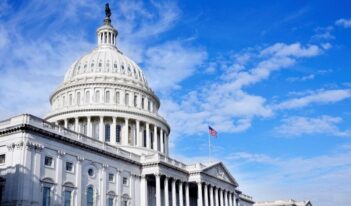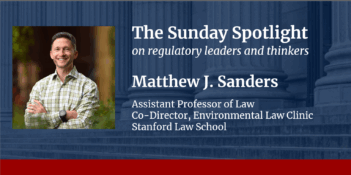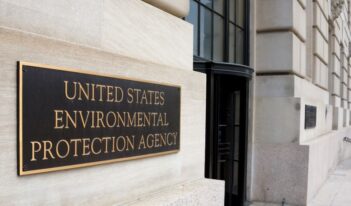
Regulatory efforts to combat honeybee deaths focus on pesticides.
Although many people consider honeybees a nuisance when they interfere with summer picnics or threaten to inflict painful stings, the world’s food supply actually depends on honeybees. Legislation recently introduced in Congress recognizes the important role honeybees play in pollinating crops, acknowledging that pollinators, including honeybees, deliver economic value worth between $20 and $30 billion domestically and $125 billion worldwide.
Yet honeybees are disappearing at an alarming rate. Jeff Pettis, a scientist for the U.S. Department of Agriculture (USDA), hasreported that the size of honeybee colonies has become “too low for us to be confident in our ability to meet the pollination demands of U.S. agricultural crops.” Without honeybees, the cost of food production could skyrocket, having a direct impact on the price and availability of groceries.
Across the globe, scientific researchers and government regulators are taking steps to respond to the increase in honeybee deaths.
The U.S. Environmental Protection Agency (EPA) reports that honeybee deaths can be attributed to at least two causes: Colony Collapse Disorder (CCD) and acute pesticide poisoning. Although these two causes are different, scientists suspect that pesticide exposure may be a contributing factor for both.
The EPA has taken steps to address the effects of pesticides on honeybees. For example, the EPA now requires that certain pesticide labels include instructions that the EPA says, if followed, could prevent harm to honeybees. Still, critics argue that such labels “do little to address the problem of bee declines . . . and are practically unenforceable.” The EPA also participates in a government-wide CCD Steering Committee along with a number of other U.S. government agencies. This interagency committee researches and analyzes the possible causes of CCD (including pesticide exposure), evaluates honeybee colony health, and seeks to establish ways to combat honeybee deaths.
Earlier this year, the EPA released a guidance document that provides “federal, state and tribal inspectors” with specific procedures to follow when determining if pesticides played a role in honeybee deaths and if such pesticides were used legally or illegally. This guidance, however, is non-binding, and the U.S. has yet to ban any pesticides thought to contribute to honeybee deaths.
In Europe, by contrast, regulators have taken steps to eliminate the use of certain pesticides thought to be harmful to bee populations. The European Food Safety Agency (EFSA) recently reported that three types of neonicotinoid pesticides “posed a ‘high acute risk’ to pollinators, including honeybees.” In response to the report, and after a split vote among European Union (EU) members, the European Commission decided in April to institute an “EU-wide” ban on using neonicotinoids “on crops attractive to bees.” The ban will begin on December 1, 2013 and will last for two years.
The EU ban, however, does face challenges. The United Kingdom, which did not vote in favor of the ban but will comply with it, recently announced that it “rejects the science behind the moratorium.” Syngenta Crop Protection and Bayer CropScience, two producers of the banned neonicotinoids, have brought cases in the Court of Justice of the European Union challenging the ban.
While the EPA agrees with the EFSA report’s scientific conclusion “with regard to the potential for acute effects and uncertainty about chronic risk,” the U.S. agency has yet to determine how best to manage these risks, a separate determination which U.S. federal law requires as part of pesticide regulation.
Jim Jones, Assistant Administrator for the EPA’s Office of Chemical Safety and Pollution Prevention, recently explained his agency’s caution in deciding how to proceed, reportedly stating that “there are non-trivial costs to society if we get this wrong.”
Still, there are ongoing calls in the U.S. for the federal government to ban neonicotinoids. Non-profit advocacy groups like Beyond Pesticides and the Center for Food Safety are encouraging the public to contact members of Congress and urge them to support the Saving America’s Pollinators Act of 2013. This bill, introduced in July, would require the EPA to ban the use of certain neonicotinoids that could threaten bees. The bill has been referred to the Subcommittee on Horticulture, Research, Biotechnology, and Foreign Agriculture, but has not yet been put to vote in either the House of Representatives or the Senate.



